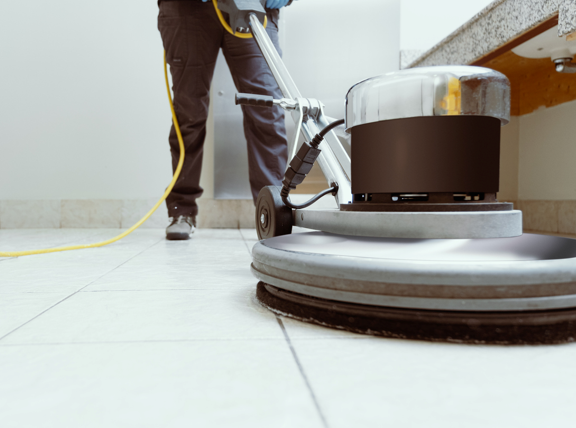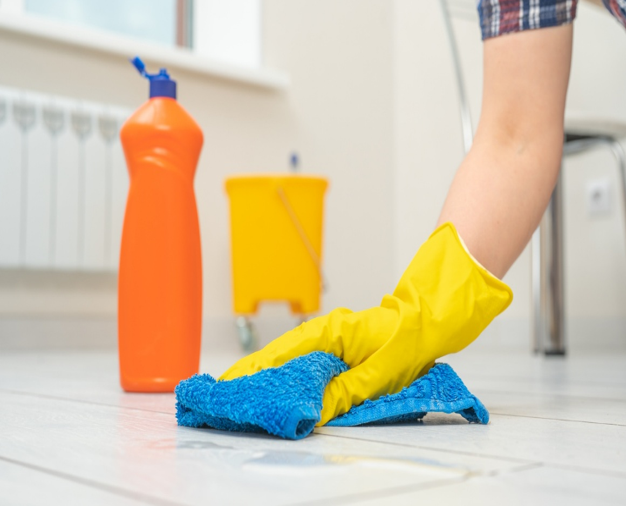An In-Depth Guide to Travertine Restoration

An In-Depth Guide to Travertine Restoration
Travertine is a stone that has been utilized for centuries to craft exquisite surfaces like floors, countertops, and walls. Its unique texture and natural beauty make it a popular choice for both residential and commercial spaces. However, like any natural material, travertine can experience wear, scratches, or stains over time diminishing its original appeal. This is where the process of travertine restoration comes into play.
In this comprehensive guide, we will delve into all the information you need to know about restoring your travertine surfaces. From understanding the reasons for restoration to the step-by-step process, tips for maintenance, and the importance of professional help, we’ve got you covered.

Why Restore Travertine?
There are many compelling reasons why you might consider restoring your travertine surfaces:
Wear and Tear: Over time; foot traffic, spills, and regular use can cause signs of wear and tear on your travertine surfaces. This can lead to scratches, dullness, or unevenness, detracting from the stone’s natural beauty.
Stains & Discoloration: Due to its unique nature, travertine tends to easily absorb liquids which can lead to unsightly stains or even discoloration. These marks can be caused by spills, food, drinks, and cleaning products, as well as natural elements like water or minerals.
Etching: Travertine is sensitive to acidic substances, which can cause etching on the surface. Etching appears as dull spots or marks, caused by the chemical reaction between acids and the calcium carbonate in travertine.
Loss of Shine: With time and use, travertine surfaces can lose their natural shine and luster. This could be due to the accumulation of dirt, grime, or old sealant, which can fade the stone’s appearance.
Overall Dullness: Apart from specific issues like stains and etching, travertine surfaces can also gradually become lacklustre and lose their shine. This may occur due to a combination of factors such as wear and tear, improper cleaning methods, or exposure to tough environmental conditions.
Restoration aims at addressing these concerns by repairing damage, removing stains, and rejuvenating the beauty of the travertine stone. The goal is to restore travertine surfaces to their original state while enhancing their appearance and prolonging their lifespan.
The restoration process for travertine surfaces is a thorough and comprehensive procedure that involves several key steps, such as:
- Assessment: A thorough evaluation of the travertine surface is carried out to identify any signs of damage, such as scratches, stains or etching. This assessment helps determine the extent of restoration needed and the best approach to achieve optimal results.
- Cleaning: Thoroughly cleaning the surface is an important step in preparing it for restoration work. his step is crucial for preparing the surface for further restoration work and ensures that the subsequent steps can be carried out effectively.
- Repair: Specialized techniques and products are used to address any scratches, stains, or imperfections on the travertine surfaces. This may involve honing the surface to eliminate scratches and etching or filling in cracks and crevices to restore a uniform appearance.
- Polishing or Honing: Based on the desired outcome the travertine surface can be polished to achieve a shine or honed to create a more matte look. This polishing or honing process is vital for enhancing the stones beauty and giving it a renewed appearance.
- Sealing: Finally, to safeguard against damage, and prolong its lifespan, the restored travertine surface undergoes sealing. This protective step maintains the stones integrity, while ensuring its lasting beauty for generations to come.
Polished or honed finishes are two popular options for enhancing the appearance of restored travertine surfaces:
- Polished Finish: If you’re looking for a luxurious and elegant touch on your travertine surfaces, a polished finish is exactly the right choice for you. This high-gloss shine not only showcase the natural beauty of the travertine, but also creates a visually striking effect. Polished travertine is often chosen for areas where a sophisticated and upscale look is desired, such as grand foyers, hotel lobbies or high-end residential spaces.
- Honed Finish: While you admire the classy look of travertine surfaces with polished finish, you need to have a casual or rustic ambiance from your home? Then look no further than a honed finish. This matte or satin-like finish has a smooth texture with minimal gloss, giving the travertine a softer and more natural look. Honed finish is often a popular choice for areas such as kitchens, bathrooms or outdoor patios due to its cozy ambiance.
Ultimately, the choice between a polished or honed finish depends on the desired aesthetic effect, the overall design of the space, and personal preferences. Both finishes beautifully showcase the unique characteristics of travertine, while offering visual and tactile qualities to suit various styles and preferences.
Tips for Maintenance:
Keeping your restored travertine surfaces beautiful and long-lasting requires maintenance. Here are some tips to help you keep your travertine looking its best:
- Cleaning: Make it a habit to clean your travertine surfaces regularly, using a cloth or mop and a pH neutral cleaner. Avoid using harsh chemicals or abrasive cleaners as they can harm the stone’s surface.
- Prompt Spill Clean-up: Using a clean, damp cloth, wipe up spills on travertine surfaces immediately to prevent them from seeping into the stone and causing stains.
- Avoid Acidic Cleaners: It’s best to steer of acidic cleaners or vinegar when cleaning travertine as they can etch the surface and dull its appearance. Stick to pH cleaners that are specially formulated for natural stone.
- Resealing: Periodically reseal your travertine surfaces to maintain their protective layer and prevent staining. The frequency of resealing will depend on factors such as usage and exposure to moisture.
- Use Coasters and Mats: Protect your travertine surface from scratches and heat damage by using coasters under glasses, and mats under hot dishes or cookware.
- Regular Maintenance Checks: Take the time to inspect your travertine surfaces regularly for any signs of wear, damage, or deterioration. Address any issues promptly to prevent them from worsening.
Importance of Professional Help:
Professional help is essential when it comes to restoring and maintaining travertine surfaces. Here are the reasons why;
Expertise: Professionals have the knowledge, training, and experience to accurately assess the condition of travertine. By identifying any problems, they can determine the most effective restoration techniques.
Specialized Equipment: Professionals have access, to tools and equipment specifically designed for stone restoration. These tools enable them to achieve clear-cut results while working efficiently.
Quality Results: Professional stone restoration services are committed to delivering high quality outcomes. They have the expertise required to restore travertine surfaces bringing back their beauty with a polished finish that enhances the overall aesthetic appeal of any space.
Customized Solutions: Every travertine surface is unique, and professionals can provide customized solutions tailored to specific needs. They can recommend the most suitable restoration techniques and products based on factors such as the type of damage and the surface’s location and use.
Long Term Value: Professional restoration contributes to preserving the long-term value of travertine surface. Properly maintained and restored surfaces can last for decades, adding value to properties and maintaining their aesthetic appeal.
Overall, professional help ensures that travertine surfaces receive the care and attention they need to look their best and remain in optimal condition for many years to come.
In conclusion, Travertine restoration is a complex process that requires skill, expertise, and the right tools and products. Whether your travertine surfaces are showing signs of wear and tear; or you simply want to enhance their look with a fresh coat of a polished finish- restoration can effectively revive these stone surfaces.
By understanding the reasons, behind restoration the actual restoration process, maintenance tips and the significance of help, you can make informed decisions regarding the upkeep of your travertine surfaces while ensuring they remain beautiful for years to come.
